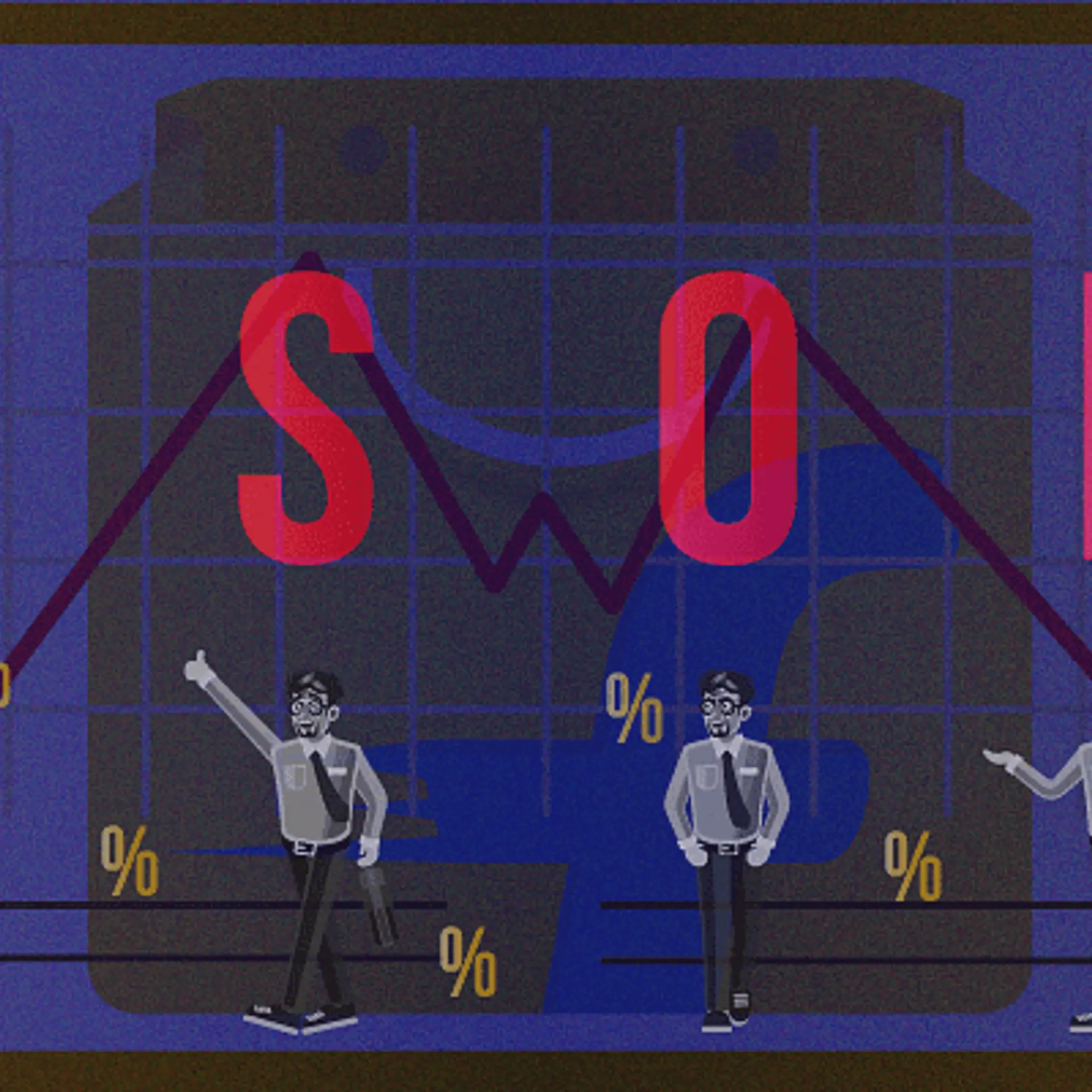[YS Learn] Five factors that help companies like Pixar, Netflix, Airbnb build great teams
Robert Bruce Shaw’s book Extreme Teams: Why Pixar, Netflix, Airbnb, and Other Cutting-Edge Companies Succeed When Most Fail, highlights the key to success — building great teams.

Image credit: Shutterstock
What do Pixar, Whole Foods (acquired by Amazon), Zappos, Airbnb, Patagonia, Netflix, and Alibaba have in common? They are all cutting-edge companies in their own sectors and this is because of the way they run their ship.
Each understands the power of teams, and constantly strove to improve how they operate.
“These seven companies are constantly experimenting with better ways of operating—and don’t simply replicate what others had done. In this regard, they are interesting firms with a level of energy and creativity often missing in more traditional groups,” states Extreme Teams: Why Pixar, Netflix, Airbnb, and Other Cutting-Edge Companies Succeed When Most Fail, a book by Robert Shaw.
The author points out that the teams of these seven companies — Pixar, Whole Foods (acquired by Amazon), Zappos, Airbnb, Patagonia, Netflix, and Alibaba — have played a significant role in ensuring their growth and success. While great teams alone do not contribute to success, they can be pivotal in a company’s growth.
Fostering a shared obsession
Extreme teams are born with each of the members sharing a strong and passionate belief in both the work they do and the firm they’re a part of. Shaw explains it to be a cult-like behaviour and quality, where each contributor believes to be working towards improving some aspect of the world.
Shaw writes, “These teams also have a deep faith in their ability to overcome adversity. Contrast this approach to conventional teams whose members often view their work as tasks to be done, even professionally, but with no shared passion for their work or the team’s larger reason for being.”
The author points out that Whole Foods, which was acquired by Amazon in 2017, believes that teams, when designed and staffed properly, maximise what people can contribute to the success of the business.
Quoting Whole Foods’ John Mackey, the book says,
“Working in teams creates familiarity and trust and it comes naturally to people. Humans evolved over thousands of years in small bands and tribes. It’s deeply fulfilling for people to be part of a team, where the contributors are valued, and the team encourages them to be creative and make contributions. A well-designed team structure taps into dormant sources of energy, so that the whole becomes greater than the sum of the parts. The team culture of sharing and collaboration is not only fundamentally fulfilling to basic human nature, it is also critical for creating excellence within the workplace.”
The author adds having people who are consumed with a shared goal is almost always required to produce something great.
Fit in culture over experience
Each of these ‘extreme teams’ looks at how each individual member fits within the narrative. For example, Pixar has a supportive emotional culture. But, while the company is very supportive, it always puts the story above the people.
A former employee said - “The people at Pixar are my best friends. But we will fire best friends if needed to make a great film.” It simply means, nobody is above the story. Everyone who is working on a project should fit the role and culture and contribute towards the story.
Netflix, on the other hand, is very clear that it will retain and keep only extraordinarily talented people.
Shaw says:
“Netflix is clear about its expectations — extraordinary performance from every employee. Effort doesn’t matter. Intent doesn’t matter. Results matter. This can mean, at one extreme, that those who produce outstanding results with relatively little effort are rewarded based on the outcome they achieve. On the other extreme, those who work hard but fail to produce results will leave the firm. This doesn’t mean that they are fired after one misstep, but it most likely means they are fired if there is a second misstep.”
The expectation and culture are made clear from Day One. Shaw explains that teams like these generally end up valuing the personal traits needed for a team to achieve its goals. This means they hire and promote people only those who fit their culture, and if you don’t, you will be asked to leave.
“Each team develops a unique set of practices to ensure that members have the right mix of personal motives, values, and temperament. They hire and promote people who fit their culture. Contrast this approach with conventional teams where members are often selected based on their past experience or functional skills,” says the book.

Image Source: Shutterstock
The focus on more instead of less
Extreme teams focus or rather fixate strongly on the few areas that are critical to their success. For Pixar, it is the story; for Netflix, it is being future-forward and thinking. Teams focus on and dedicate significant portions of their time to these tasks with no scope for distractions, including processes.
Netflix believes companies create processes to compensate for a drop in talent density as they grow.
The author writes, “Processes are based on a set of assumptions about what is needed in a given situation and a particular point in time — which becomes a problem when the assumptions on which those processes are based become outdated as things change in a firm’s marketplace. This is not to suggest that processes are unnecessary — only that processes are no substitute for talent. The problem is that processes are almost always less effective than talent in surfacing and adapting to emerging business challenges and competitive threats. Netflix works hard to avoid the trap of putting processes before people. It gives its employees big jobs and ample latitude on how to perform those jobs. It strives to simplify or eliminate the administrative requirements it places on its people. It also works hard to surround its people with talented peers, which the firm believes is the best perk a company can offer employees.”
However, these extreme teams also create approaches that help provide resources, time, and autonomy needed to explore new opportunities for the growth of the firm.
The balance between pushing hard and soft
“Extreme teams are simultaneously harder and softer than conventional teams. The culture of these teams is tougher in driving for measurable results on a few highly visible targets. These teams are also willing to openly deal with their own weaknesses and take action on those who are underperforming. At the same time, these teams are softer in terms of being more supportive in creating environments that foster collaboration, trust, and loyalty. Contrast this approach to conventional teams that are more “beige” in how they operate —failing to push either the hard or soft sides of effective team life,” says Shaw.
It is like what Pixar does — you have autonomy and great emotional support from everyone, but in the end you should matter to the film.
Or for that matter Whole Foods — the team decides if you stick on or not, if you value the overall culture of the organisation or not.
Being comfortable with discomfort
Extreme teams have a common goal: results. Conflict is a way to push for a result and many even encourage it within their members. But this doesn’t mean unhealthy conflict. These extreme teams believe that fighting over the right issues and factors ensure better results, no matter the discomfort it may cause.
What matters is the risk and challenges they can take on to bring in innovation. “Contrast this approach to what is often found in conventional teams where people view conflict as something to be avoided or a sign of failure,” explains Shaw.
Sociologist and author of Bowling Alone Robert Putnam states ‘social capital’ as a means to describe how relationships operate across different settings.
“Social capital, in the simplest terms, is the “glue” that connects people together and, in so doing, helps groups, organisations, and society function more effectively,” adds Shaw.
It is this social capital that helps in encouraging individuals to support others for other reasons than self-interest. The book explains this and says,
“In the private sector, Putnam describes another form of social capital in the networks that exist among various companies and leaders in Silicon Valley. These informal networks produce, in some cases, voluntary cooperation among people and companies, which in turn facilitates the development of new technologies. The central premise of Putnam’s book is that interpersonal connections are critical to the health of a society and the success of its various institutions. A related aspect of social capital is the idea that it is an asset that can be accumulated and then used when needed.”
This social capital helps a team withstand any setbacks it may face, and get back on track. Also, the relationship among team members that help produce a greater commitment to one another’s success, fostering the success of the group.
The negative qualities of having an extreme team
It is also important to understand that extreme teams — despite the great track record — also have their downsides.
Shaw says - “Firms that use teams wisely are not naïve — they know that teams, by their very nature, have negative qualities.” Netflix, for example, believes in giving its employees a great deal of autonomy but also holding them to high standards of performance.
A common misconception is that these high-performing teams are easygoing work places.
“Some companies, including Whole Foods, contribute to this belief by emphasising the benefits of a friendly work environment. Articles and books profiling these firms describe the fun side of how they operate — including a quirky work environment (colourful corporate offices, team-building events) and lavish benefits (free gourmet food, employee fitness centres, onsite massage),” adds Shaw.
What is missed is the fact that the intensity of working in an environment, where all talented people are super obsessed with their work and not only hold themselves but also others to produce results of the same high level.
These well-designed teams can increase the pressure to deliver. “Realising that your coworkers depend on you can be more stressful and messy than working in a conventional firm where people strive to gain their supervisors’ approval,” explains the author.
But it is this dichotomy and difficulty in creating, designing, and supporting these teams that give them a strong competitive edge.
Shaw adds:
“If managing these teams was easy, they would be less valuable because they could be copied easily. There needs to be a great deal of thought, and perhaps more importantly ongoing experimentation, to get the formula right. These groups are a work in progress, each trying different team approaches to determine what works for them.”
Edited by Saheli Sen Gupta


![[YS Learn] Five factors that help companies like Pixar, Netflix, Airbnb build great teams](https://images.yourstory.com/cs/wordpress/2016/12/gain-your-team%E2%80%99s-trust.jpg?mode=crop&crop=faces&ar=2%3A1&format=auto&w=1920&q=75)
![[YS Learn] Here is what you can do to catch Sanjay Nath of Blume Venture Partners during a pitch](https://images.yourstory.com/cs/2/a9efa9c02dd911e9adc52d913c55075e/Imageszjl-1598791006392.jpg?fm=png&auto=format&h=100&w=100&crop=entropy&fit=crop)
![[YS Learn] #Branding101: What startups can learn from Dunzo’s branding game](https://images.yourstory.com/cs/2/a9efa9c02dd911e9adc52d913c55075e/Imagen4iv-1598458193836.jpg?fm=png&auto=format&h=100&w=100&crop=entropy&fit=crop)
![[YS Learn] How Rapido cracked its first fundraise in a sector dominated by Ola and Uber](https://images.yourstory.com/cs/2/79900dd0d91311e8a16045a90309d734/RapidoCo-FounderAravindSanka-1592804628700.jpg?fm=png&auto=format&h=100&w=100&crop=entropy&fit=crop)





